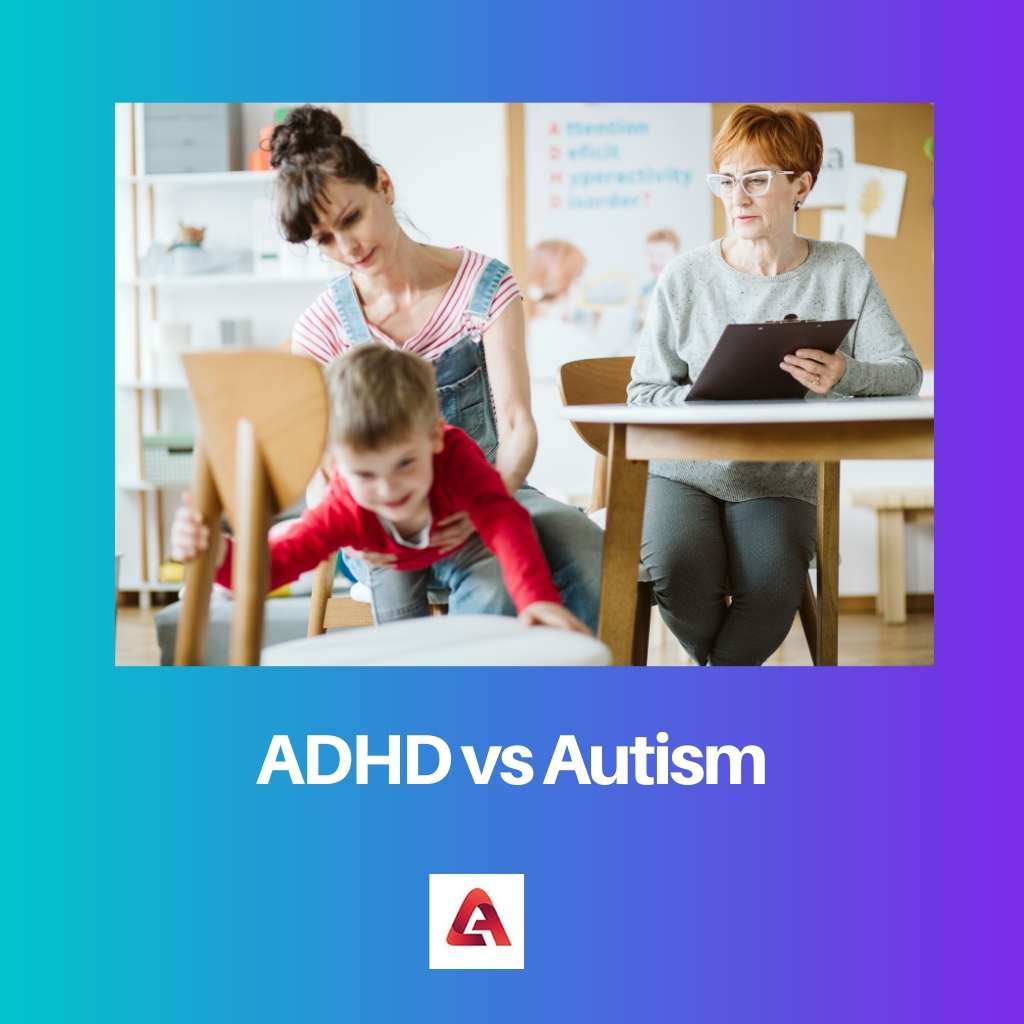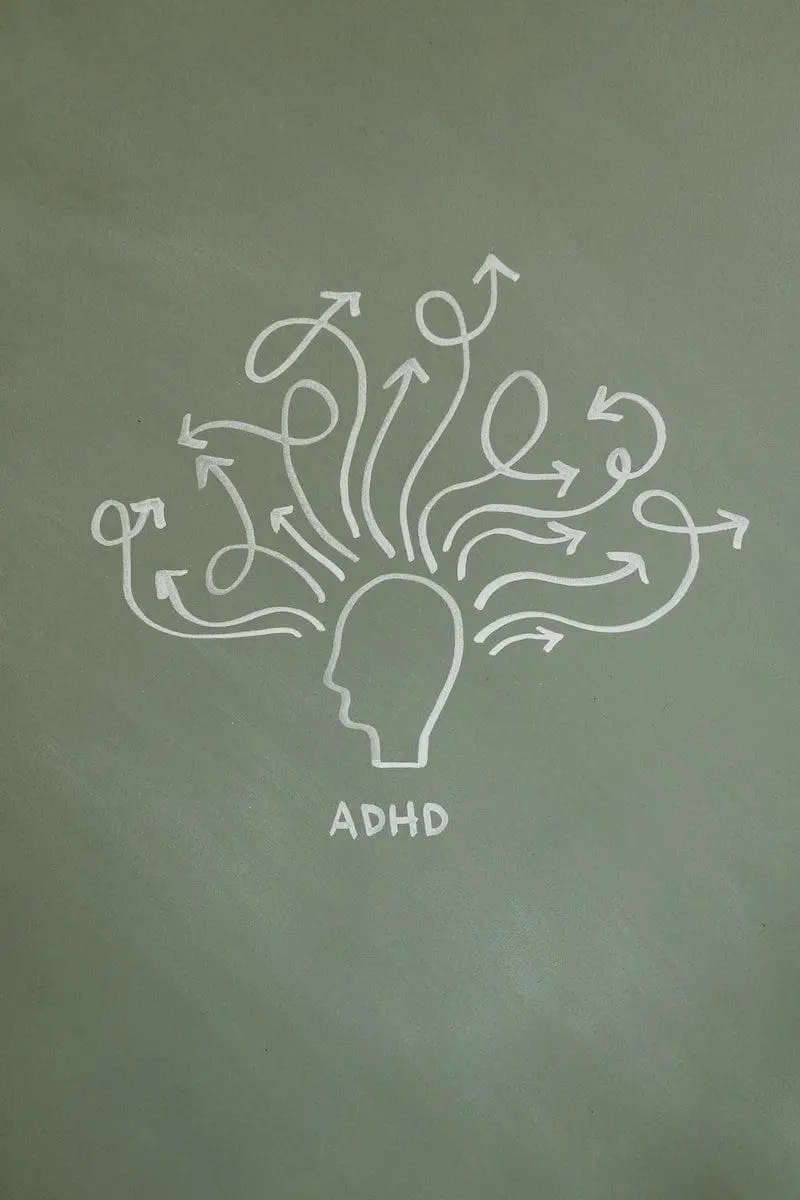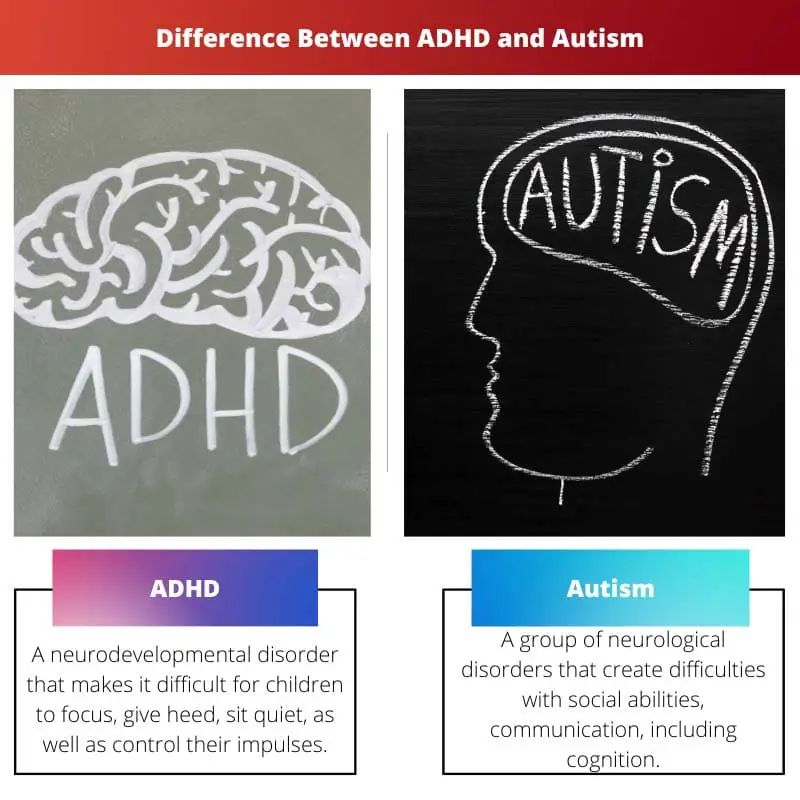Many of the physical symptoms of autism as well as ADHD are very similar. This can be hard to distinguish and detect these characteristics in a child.
Autism, commonly known as an autism spectrum disorder as well as ASD, has a wide variety of illnesses. Whereas ADHD (also referred to as ADD) is not a spectrum illness, it can cause various indications, similar to autism.
Key Takeaways
- ADHD (Attention Deficit Hyperactivity Disorder) is characterized by inattention, impulsivity, and hyperactivity, while autism spectrum disorder (ASD) involves difficulties with social communication, interaction, and repetitive behaviors.
- ADHD is diagnosed in childhood, while autism can be identified as early as infancy, though both conditions can persist into adulthood.
- Treatment for ADHD involves medication and behavioral therapy, whereas autism treatments include various therapies, such as speech and occupational therapy and behavioral interventions.
ADHD vs Autism
ADHD is a condition that affects a person’s ability to focus, pay attention, and control impulsive behavior. The symptoms of ADHD are difficulty staying focused, hyperactivity, and impulsivity. Autism is a condition that affects a person’s ability to communicate, socialize, and interact with others.

ADHD (attention deficit hyperactivity disorder) is a neurological illness characterized by persistent inattention or impulsive behavior that impairs performance and growth.
Some people with ADHD have trouble controlling their emotions or have cognitive processing issues. An integration of genes and environmental influences has been linked to autism.
Certain illnesses, like rubella, poisons, such as valproate, alcohol, drugs, insecticides, lead, air quality, intrauterine growth restriction, and autoimmune illnesses are all possible causes throughout gestation.
Comparison Table
| Parameters of Comparison | ADHD | Autism |
|---|---|---|
| Kind of Disorder | A neurodevelopmental disorder that makes it difficult for children to focus, give heed, sit quiet, as well as control their impulses. | A group of neurological disorders that create difficulties with social abilities, communication, including cognition. Autistic disorder condition includes repetitive movements as well (ASD). |
| Impacts | Making and keeping friends can be difficult if one has problems following social rules. Severe reinforcement for behaving out and not listening attentively on a regular basis can have a detrimental effect on a child’s social self and drive, making them feel “terrible” or “no good.” | Social comprehension, connection, and repetitive patterns or habits are among the most difficult aspects of ASD. Many children with ASD, even those who may not have substantial cognitive difficulties, have difficulty interacting, comprehending how and when to connect to others, and deciphering social cues. |
| Who can Help | ADHD is diagnosed and treated by pediatrics, neuropsychologists, developmental-behavioral general practitioners, registered nurses, and child psychologists. | Social workers and clinical child psychotherapists: To assist children in improving their social connections, provide counselling or social skills coaching. |
| Variability | There seem to be three varieties of ADHD, and every person might experience various signs. | ASD has a wider range of symptoms than ADHD. ASD is a continuum that encompasses a wide range of situations. |
| Process of Diagnosis | ADHD is a cognitive problem that, unlike many medical disorders, cannot be diagnosed with a medical diagnostic. | Autism, unlike ADHD, cannot be detected with a diagnostic exam such as a blood sample or a physical examination. |
What is ADHD?
Among the most frequent mental conditions concerning children is attention deficit hyperactivity disorder (ADHD). Many adults have ADHD.
Obliviousness (inability to maintain concentration), hyperactivity (an excessive activity that is inappropriate for the situation), and impulsivity are all symptoms of ADHD.
ADHD affects approximately 8.4% of kids and 2.5 percent of adults. Whenever disruptions in the class or difficulties with homework occur, ADHD is frequently detected in school-aged kids.
Several ADHD symptoms, like excessive movement, inability to sit still for extended periods, and short attention spans, are typical in young kids.
The differences in individuals with Adhd have been that their hyperactivity and poor attention are significantly higher than usual for young age, causing discomfort or issues functioning at the house, school, or even with companions.
ADHD can be classified into three types: unresponsive, overactive, or mixed. The indications that have happened in the last six months are used to diagnose.

What is Autism?
Autism is a spectrum disorder, which means it encompasses various aspects and manifestations. Consequently, it’s known as Autism Spectrum Disorder or ASD for short.
ASD is a kind of autism that affects speech, conduct, and intellect. The majority of people with autism do not exhibit any physical symptoms.
It’s not like one can tell if someone has autism just by looking at them. Furthermore, autism may have a significant impact on a patient’s cognitive.
Some people may require a lot of assistance in particular disciplines, while others may be exceptional in many others.
People with this disorder frequently exhibit a blend of both of these realities. The autism spectrum encompasses a wide range of illnesses that have been previously classified in various ways.
The scope includes autism, Asperger syndrome, and other unspecified developmental problems.
Autistic individuals may exhibit a variety of symptoms. There may be a few indications and indicators common to all autism spectrum disorders, but it’s crucial to remember that each spectrum has an unlimited number of differences.

Main Differences Between ADHD and Autism
- ADHD can lead a person to jump from activity to task and difficulty to staying solely on a single thing at a time. Autism makes people be hyper-focused on a single job until it is completed, being unable to redirect their attention.
- Individuals with ASD might well be inundated by stimuli and have difficulty responding to everyday events such as being called by their names. It may be tough to grab their eye if they are preoccupied with anything else. Stimuli have the potential to easily divert attention with ADHD.
- People with ADHD have a hard time avoiding blurting things out or interrupting others. Individuals with ASD may be reticent to speak and wish to remain silent.
- To self-soothe, individuals with ASD engage in repetitive movements such as swaying, scratching their heads, and twirling. Although if they have intense urges to function, individuals with ADHD can move freely.
- Autism can cause people to retreat and shun social connections in ways that aren’t seen in persons with ADHD.




